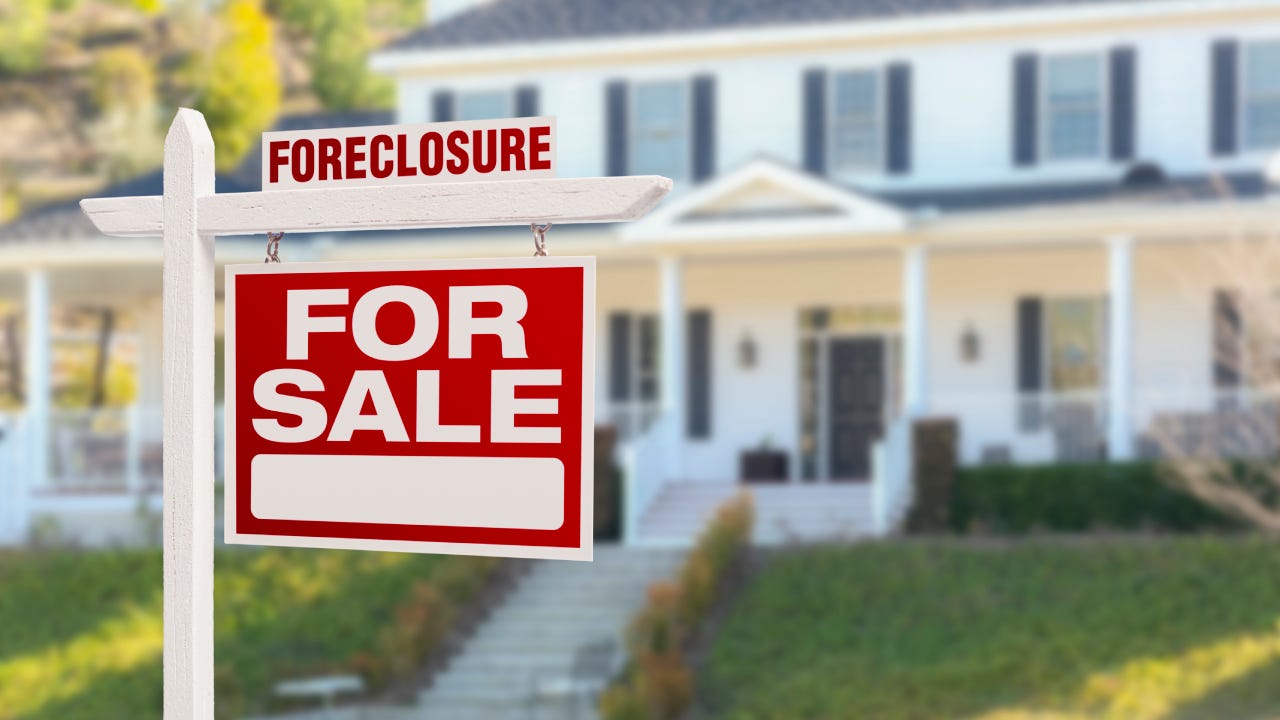How Does Bankruptcy Affect Your HELOC?




Key takeaways
- Bankruptcy technically eliminates your HELOC obligation. But you have to keep making payments, if you don't want to lose your home to creditors.
- The exact impact depends on the type of bankruptcy you file: Chapter 7 or Chapter 13.
- However you file, declaring bankruptcy can make it more difficult to access home equity, affecting your ability to obtain a HELOC in the future.
Contrary to popular belief, filing for bankruptcy doesn’t magically make all your debts vanish — especially if it’s home-based debt, like a home equity line of credit (HELOC). Declaring yourself bankrupt will release you from the responsibility of the HELOC. But it won’t get you off the hook for HELOC payments – if you want to keep your house, that is.
Yes, it’s confusing. Here’s how it works – everything you need to know about what happens to a HELOC in bankruptcy.
Does a bankruptcy affect an existing HELOC?
If you haven’t drawn any funds against your home equity line of credit (HELOC), the process is straightforward: The lender simply closes the line of credit. However, if you have an active balance on your HELOC, the impact largely depends on the type of bankruptcy you file.
Two types of filings come into play for individuals. Chapter 7 involves liquidating assets to quickly pay off debts, while Chapter 13 allows for a structured repayment plan to manage debts without losing assets over time.
In both types of bankruptcy filings, one of the initial steps is an automatic stay, which pauses most debt-collection initiatives, including those concerning your HELOC. “The automatic stay says the bank or whoever it is can’t take any collection efforts: You can’t send a notice, you can’t make a phone call, all lawsuits have to stop,” says Travis Christiansen, attorney at Boyack Christiansen Legal Solutions, a law firm in St. George, Utah. “Because you file for bankruptcy, it means that you personally get a discharge of the [HELOC’s] promissory note,” which is your legal promise to repay the sums drawn on the line of credit.
However, this protection is only temporary, Christiansen emphasizes. It relieves you of the obligation to pay the HELOC, but doesn’t remove the lien itself on your home. While the automatic stay offers a breather from foreclosure or repossession, eventually, “if you want to keep the property, you have to continue making your payments on your home; otherwise, you’re going to lose it.”
In other words, if you want to keep the old homestead, you must stay current on your HELOC. Failing to do so can result in the lender seeking to lift the automatic stay and proceed with foreclosure.
How does a Chapter 7 bankruptcy affect a HELOC?
If you have significant unsecured debts and limited means to repay creditors, Chapter 7 — often called “liquidation” bankruptcy — could be the best option. While it involves selling assets to discharge debts, most states have homestead exemptions, which protect your home’s equity from creditors in case of bankruptcy. But you still have to take certain steps to safeguard your home.
Here’s why: The dollar amount of the homestead exemption varies greatly from state to state. In California, for example, it’s up to $600,000; in New York, it varies by county, ranging from$102,400 to $204,850 ; in Kentucky it’s only $5,000 (as of 2025). If your home equity exceeds your state’s exemption — and, given the way rising home values lately have pushed up homeowners’ equity stakes, it well might — a bankruptcy trustee may sell your home to pay off creditors, including your HELOC lender.
So, if you have an outstanding HELOC balance, you need to keep it in good standing – keep paying the loan if you want to keep the home. “The homeowner would be able to file a Chapter 7 by keeping their regular monthly mortgage payments current on both the first [mortgage] and the HELOC, and their homestead exemption would protect their home from liquidation by a Chapter 7 trustee,” says Louis J. Esbin, a certified bankruptcy attorney and founder of the Law Offices of Louis J. Esbin, a Santa Clarita, Calif.-based law firm. By reaffirming the debt with the creditor, you agree to remain liable and continue paying all or part of the debt, even though it would otherwise be discharged in bankruptcy.
Reaffirmation also allows you to renegotiate terms such as reducing your payments, adjusting your HELOC’s interest rate, or lowering the total amount you will need to repay over time. Christiansen points out that homeowners can suggest spreading out missed payments over a year. “The banks really don’t want that real estate on their books, and so they will work with you often to help negotiate to get caught up on that stuff.”
How does Chapter 13 bankruptcy affect a HELOC?
Chapter 13 bankruptcy, or reorganization bankruptcy, allows you to keep your property while reorganizing debts into a manageable repayment plan. In this case, your HELOC becomes part of that plan to pay your debt in three to five years.
“Chapter 13 is a really great vehicle for people…to get themselves through it while keeping their assets, keeping their home,” says Esbin.
In Chapter 13 bankruptcy, reaffirmation is optional because the repayment plan usually addresses the disposal of secured debts. However, you can reaffirm a debt like your HELOC balance to maintain a good relationship with the lender or ensure the loan terms remain favorable. “You can either pay it through your plan or pay it out of the plan,” says Christiansen. “But if you’re behind, you can … very often negotiate it with [the lender] to get caught up over time.”
Is it possible to keep your HELOC after bankruptcy?
Yes, keeping your HELOC after bankruptcy is possible. You have to set up a repayment plan with a Chapter 13 bankruptcy. That will allow you to keep the line of credit open. However, changes could be in store.
“If you declare Chapter 13 bankruptcy and maintain your home equity line of credit, be prepared for some limitations,” says Rose Krieger, senior home loan specialist for Churchill Mortgage. “If you had any available credit left to pull from, you may no longer be able to access that open line. Additionally, you would still be required to make the minimum monthly payment. For lenders, declaring bankruptcy that hasn’t been discharged for four years is seen as a risk for HELOCs.”
While not a legal type of bankruptcy, the strategy combines a Chapter 7 filing to discharge unsecured debts and then a Chapter 13 filing to set up a repayment plan for any remaining debts. It’s like using one chapter to wipe the slate clean and the other to create a manageable payment plan. With the Chapter 13 filing, “The property is worth less than the amount owing on the first [mortgage] and you strip away the HELOC,” says Esbin. “Because the ongoing debt has been discharged, you don’t need to pay anything on that HELOC” (see “What is lien-stripping?” in FAQ).
What strategies can help safeguard your HELOC from bankruptcy?
There are several strategies to help you safeguard your HELOC if you find yourself heading toward bankruptcy:
- Keep making your monthly payments on time.
- Try communicating with your lender to make adjustments in your payment plan before you file for bankruptcy, making it easier to manage your finances.
- Consider refinancing your HELOC into a fixed-rate loan before filing, to make payments more stable.
- Speak with a bankruptcy attorney to review your options for repayment and avoiding foreclosure.
How does bankruptcy affect your ability to get a HELOC?
Bankruptcy can stick around on your credit report for quite a while— seven years for Chapter 13 and 10 years for Chapter 7. This can seriously impact your credit score, making it tough to qualify for new credit products, including HELOCs.
“Bankruptcy is just a matter of getting your credit rebuilt to the point that you can get lending, and it can be done in a two to three-year time period,” says Christiansen. He suggests paying bills on time or getting a secured credit card to get your credit record back on track.
Remember, loan criteria can vary depending on the lender, so it’s worth contacting one directly. Krieger recommends asking questions like: “What are the requirements for qualifying and maintaining a HELOC? What are the credit and bankruptcy guidelines? And if I do not currently qualify, what do I need to do to qualify in the future?”
You can also enlist the help of credit counseling agencies to develop a plan to rebuild your credit.
Bottom line on bankruptcy and HELOCs
Deciding which type of bankruptcy is right for you requires understanding how it will impact your financial situation before and after filing. Chapter 7 aims to eliminate debts altogether, while Chapter 13 focuses on setting up a plan to repay them. Each has its own pros and cons, so you’ll want to think through your situation carefully before deciding which one is best for you.
“Bankruptcy protection exists for a reason,” says Krieger. “There are many circumstances in life that are out of our control, and while needing to utilize the service may seem daunting, it will provide you with a fresh start for the future.”
FAQ
Why we ask for feedback Your feedback helps us improve our content and services. It takes less than a minute to complete.
Your responses are anonymous and will only be used for improving our website.




